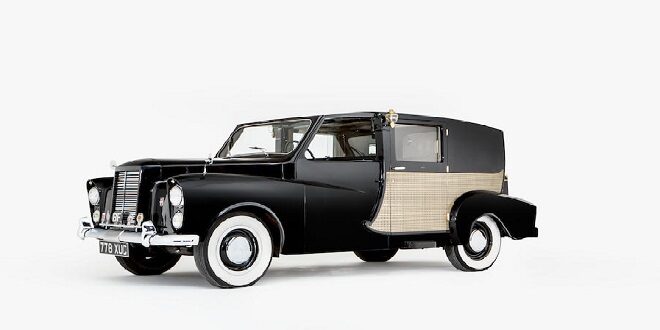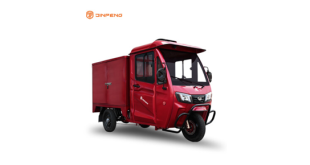Nubar Sarkis Gulbenkian, monocle in right eye and orchid always on the label, was one of London’s most recognizable playboys during the 1960s. He lived at the Ritz Hotel, married three times, and enjoyed a lifestyle of supreme indulgence. He was of Armenian-Jewish extraction and, like his father Calouste Gulbenkian, made his fortune in the Middle East oil industry.
Old Calouste’s acumen at dealmaking meant he eventually owned 5 percent of the shares in oil company BP. Nubar was no less astute but enjoyed more of his fortune than his father ever had. Motoring was a Gulbenkian passion. At first, it was ultra-fast vintage sports cars; then a string of specially made, and mostly very ugly, Rolls-Royces.
In 1965, Nubar decided to have a unique miniature limousine built—based on London’s superbly maneuverable Austin FX4 taxi. A bewildered Rolls-Royce was asked to assist, and construction was eventually entrusted to the workshops of FLM Panelcraft in London’s Battersea.
Soon, a rear passenger compartment resembling a horse-drawn Brougham was built onto the cab’s familiar frontage. The interior featured gold-plated fittings, there were carriage lamps on the door pillars, and the hood sported a Lalique glass mascot.
It instantly became one of London’s most distinctive cars, and Gulbenkian ordered a second example. The first taxi went to California. It still exists, however, making
OLDSMOBILE TORONADO
Introduced to the public on October 14, 1965, the luxurious Toronado was America’s first front-wheel-drive car since the Cord 810, 30 years earlier. Its clean styling was a landmark—rated by William Mitchell, studio chief at the time, as one of the best-looking General Motors cars ever.
Heavily flared wheel arches suggested enormous wheels, its rear wings and roof pillars blended into one smooth plane, and retractable headlamps added to frontal elegance. Oldsmobile’s engineers deemed the shape perfect for the front-wheel-drive platform they’d spent seven years perfecting.
Front-drive “XP-784” prototypes disguised with Oldsmobile 98 bodies had undergone an unprecedented 1.5 million miles (2.4 million kilometers) of road testing.
LOTUS EUROPA
It was 42in (106cm) tall and, at 0.29, its drag coefficient made it highly aerodynamic. Most people thought the Lotus Europa’s compressed appearance was madcap but suspected there must be a good scientific reason.
They were right. It was the first proper production road car with a mid-mounted engine, bringing the Formula One configuration to the streets. Lotus founder Colin Chapman found a perfect drivetrain in the Renault 16.
BERTONE CARABO
The Carabo sits at the pinnacle of the “wedge” car design craze of the late 1960s and early 1970s. Along with a galaxy of other concept cars, this fantasy machine took ground-hugging to extremes.
Bertone used a mid-engined layout to turn what would normally have been a hood into an acute-angled nosecone, from which the enormous windshield was a continuation in one unbroken styling line. An abruptly truncated tail hinted at scientific aerodynamics, but the main intention of these cars was to shock and impress in equal measures.
Last word
Count Louis Zborowski was something of a showman. He built four colossal airplane-engined cars in the 1920s. They were as much as 1,648ci (27,000cc) in size, and widely known as “Chitty Chitty Bang Bangs”; rarely revving above 1,500rpm.
 Magazine Today
Magazine Today

